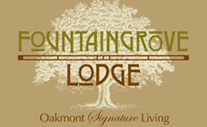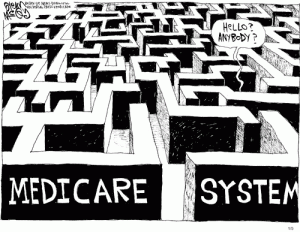This article was written before COVID-19 disrupted business as usual for all of us. For now, the California initiative to create a Master Plan for Aging is on hold. Still, there is a need for a proactive approach to regulation and for a comprehensive evaluation of the California and societal approaches to the challenges of aging. Our hope is that the outcome eventually will be positive and commensurate with the energy that is being devoted to the process.
Senior living is reactively regulated. Legislators respond to incidents and constituent complaints. A speaker at a recent USC Senior Living Executives program noted that proactive regulation would require recodification. A questioner asked if that might be an outcome of the California Governor’s Master Plan for Aging initiative or “is that exercise . . . as extensive as it is . . . just wheel spinning?”
California Master Plan
We can get some idea of how that Master Plan inquiry may eventuate from the first work product, which was released in draft on January 27, 2020, rewritten, and further discussed in a four-hour session on February 19, 2020. It’s the draft Long-Term Services and Support Report. While the draft shows much effort, after many, many hours of conversation among an insider “Stakeholder” group, in its current state it reads like a wish list.
More proactive elements may come later. During the weeks since the first draft appeared, there has been an effort to order and prioritize the recommendations, but the clamor on the 19th had each person in the meeting arguing for their particular program or point of view. One participant, near the end of the meeting, was recorded as saying, “We don’t want to be pushed to make priorities on a deadline that is largely artificial. We want to be thoughtful about it. We can’t get angry at the administration or legislature if their process is not as thoughtful as it needs to be for all of the work in the report.”
Another participant said, “Whatever we do next needs to provide something meaningful to the point we are talking about. How do we make it easier for the state to act on this? . . . And State means legislature. We don’t have to be the number one priority for the state of the state or budget. We have to put our advocacy hats on and make it easy. We need to infiltrate, integrate recommendations into everything. If there are housing proposals or whatever else, we need to put ourselves in there.” There is the risk that the report may come to be seen as no more than a lobbying list of proponent wishes.
Proactive Regulation
What might more proactive regulation look like? Here are some ideas that occur to an old guy.
- Recognizing the fragility of the population that the high acuity end of the industry serves, develop a trusted provider metric (a status earned by exceeding best practice criteria) which is only lost if a provider exceeds a certain number of adverse incidents.
- In place of today’s time-delaying approval processes, allow trusted providers to self-certify compliance and to move forward on an accelerated schedule.
- In place of today’s uniform compliance visits, allow trusted providers to self-certify ongoing compliance until, or unless, they lose trusted status.
- Step up enforcement actions to be more effective with higher penalties and more rapid interventions.
- Allow regulators to step in early as receiver to seize a failing enterprise as is today the case for insurance companies.
- Move regulatory enactments into regulations and confine legislation to principles of sound regulation.
- Revoke the excessive regulation that is now legislated.
The unfortunate fact is that the legislature tends to be more reactive than proactive. Moreover, industry trade associations tend to react to proposed legislation more than they seek proactively to make senior living the trustworthy option for aging Americans.
Discussion vs. Action
Although the Master Plan was touched on during the Q&A at the USC program, it seemed evident that the attendees may be following the discussions, but they are moving forward with their own ideas for addressing the challenges of aging. There was considerable discussion of how best to fund practical solutions to the challenge of the middle market, that socioeconomic sector that is often most neglected in discussions of public policy. There was an evident eagerness by capital providers and operators to respond to the needs of the indigent. These include housing in addition to the efficient delivery of services evinced by the Programs of All-Inclusive Care for the Elderly (PACE). These private efforts are often overlooked in the call for government-provided social insurance programs.
It may be that government simply is too embroiled in politics to be able to respond constructively to the needs of the elderly. The Master Plan discussions have certainly brought out many creative ideas, perceptive analyses of challenges, and a focus on dedicated people. Yet, one wonders whether a private institution might not be better positioned to consider the pragmatics needed to find workable solutions.
A Blueprint for the Future
The USC Leonard Davis School of Gerontology has put together a stellar program with the Senior Living Executives Course. This year’s theme was the future of senior living. The National Investment Center (NIC), which has emerged as a prime source for senior living data, was prominent. One can imagine USC or NIC sponsoring a multi-disciplined plan that could give the master planning exercise the blended pragmatic-idealistic analysis that our aging society will need. There’s a place for wheel-spinning discussion. It can provide valuable input to the quest for solutions. Still, a partnership between academia and enterprise could go far to give society a blueprint for aging into the future.
The February 18, 2020, draft Long-Term Services and Support Report can be accessed by clicking here.










